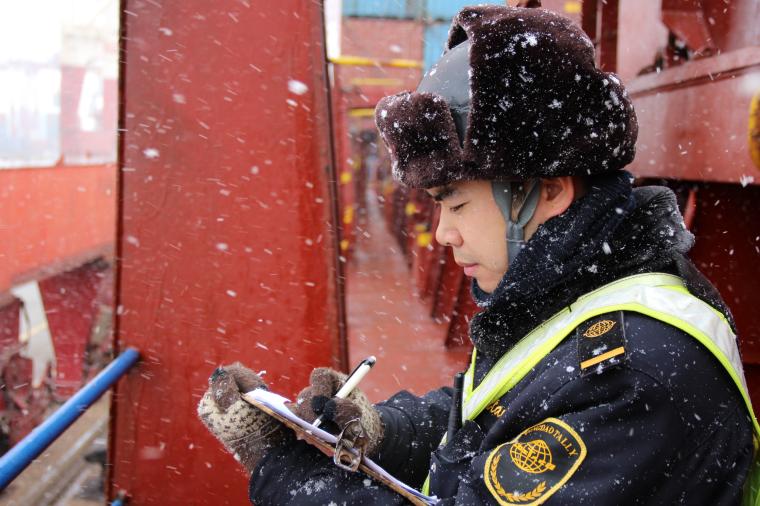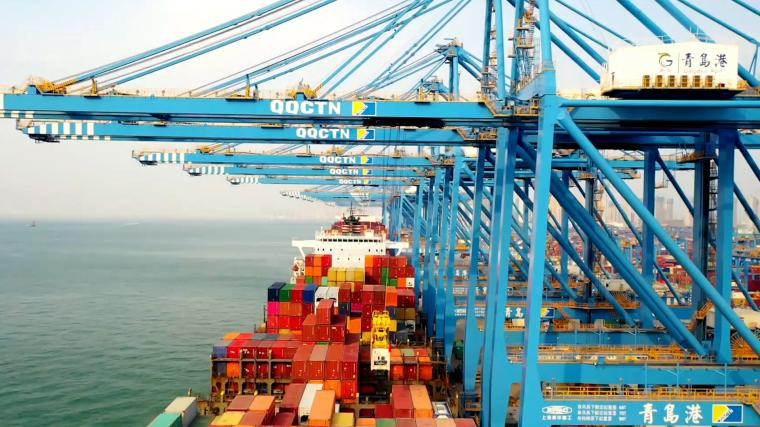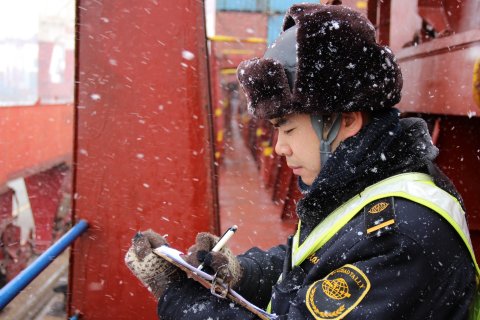Qingdao Port Improves Efficiency Threefold
A gruelling job exposed to the harshest weather conditions is set to become more bearable with the innovative use of video technology. The Port of Qingdao has partnered with Hikvision to roll out an intelligent tally system at cranes across the port.

Qingdao is one of the 10 busiest ports in the world and is located on the Yellow Sea in the Shandong Province of China. Qingdao Port consists of four areas, which are often themselves referred to as ports due to their size: Dagang port area, Qianwan port area, Huangdau port for oil tankers and Dongjiakou port area, 40 kilometres south of Qingdao city. Hikvision has installed its intelligent tally system at 84 cranes across the port to improve working conditions for its tally clerks.
Improving Employees’ Lives with Video Tech
The smart solution – which uses AI technology to recognise container and trailer ID numbers and to make them electronically ‘readable’ – allows tally clerks to perform the majority of their daily tasks remotely from the comfort of a temperature-controlled operations room. The system streams video footage and sends container and trailer ID numbers to monitors in the tally operations room in real time. ID numbers are also cross-referenced with port records automatically to ensure consistency with shipping bills.
If everything is present and correct, the tally is completed automatically, and the loading process is initiated. Otherwise, the tally clerk receives an automated alarm, allowing them to respond quickly and appropriately to resolve the issue.
Chen He, Transportation Industry Manager, Hikvision, says: “Wang Xianpeng, a tally clerk at Qingdao Port in China has worked on the docks for 18 years, exposing him to extreme temperatures and other health and safety risks. Now, Wang and his colleagues can conduct their daily work from the comfort of a temperature-controlled control room, thanks to latest-generation smart video technology from Hikvision.”

Port Makes 200% Efficiency Gains
As well as making tally operations safer and more comfortable for Wang and the tally team, the Hikvision solution has also helped the port to increase loading efficiency by 200%. He says: “With our previous manual approach to tally operations, each clerk managed a single ‘line’. Now, we can work three lines simultaneously with less effort and less risk, which has increased overall loading efficiency by 200%.”
The intelligent tally solution is also helping the port to evolve its services and optimise customer experiences. This is enabled by innovative capabilities, such as tally information queries, and cargo status tracking, which allows customers to review the status of their shipments as they pass through the port.
The Role of a Tally Clerk
A tally clerk’s role is to record proper and accurate tallies of cargoes discharged from or loaded on to vessels and record them onto a tally sheet, such as date and shift, ship name, shed or berth number, etc. This includes all details of the packages and containers loaded or discharged and reporting if there are any delays or idling of the ships.
At ports around the world, tally clerks work tirelessly to monitor the flow of trailers and containers based on shipping logs and other documentation. By matching container ID numbers with port records, they create an auditable record of all goods entering and leaving the facility – allowing customs controls to be implemented and ensuring that logistics operations run smoothly.
As well as being fast-paced and mentally demanding, the work of a tally clerk is often highly physical. Clerks are often exposed to extreme weather conditions, from ice and snow in the winter, to intense sun and soaring temperatures in the summertime.
In addition to these challenges, working on port docks can be dangerous, largely due to risks posed by moving equipment and vehicles and falling containers. The challenges of the port environment require tally clerks to be aware of their surroundings at all times, and to wear protective clothing, such as steel-capped boots.

Wang’s Story – Tough Working Conditions All Year
Tough working conditions, occupational challenges and hazards have long affected Wang Xianpeng, a tally clerk at Qingdao Port. For the last 18 years, he has been tallying containers and trailers as they move through the port, working outside in all weathers to keep logistics operations on track.
“In the summer, the temperatures on the dock reach 50 degrees Celsius, which makes it very difficult to stay cool and hydrated,” says Wang. “Then, in the winter, it can be minus 10 degrees Celsius, and I remember occasions when I’ve stopped for a moment to warm up my hands on a light bulb.”
With the new smart system, Wang and his colleagues in the tally team are no longer exposed to physical risks on the docks. What’s more, they can now carry out their daily work comfortably in a temperature-controlled environment.
“It’s like a spring day in the operations room, and we no longer deal with extreme temperatures and weather in the summer and wintertime,” says Wang. “The new technology has also reduced our safety risks and overall workloads, which is a very welcome change.”












